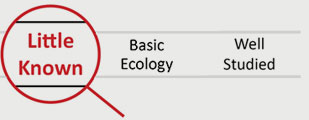The Khartoum Gerbril (Dipodillus stigmonyx) is listed as Data Deficient in view of the little information available on its extent of occurrence, natural history, threats and conservation status. The Khartoum Gerbil is restricted to a belt along the White Nile from Khartoum to south Rabak in the White Nile State of Sudan. The region is subject to overgrazing, intensive agricultural practices and charcoal production. The extent to which these anthropogenic activities impact the gerbil’s population numbers is unknown. It can be assumed that the removal of vegetation cover exposes the species to increased avian and mammalian predation, which could affect its abundance and distribution.
Key Species Champion
Ibrahim M. Hashim
How this species is doing
Pressure
Although the primary threats to this species are largely unknown, there has been an increase in aridity in eastern Sudan, and an increase in conversion of land to large scale mechanized agriculture, overgrazing, and the removal of shrub cover for charcoal production. There has also been an increase in residential and industrial areas along the west bank of the White Nile.
Responses
Loss of this species could result in a disruption of the ecosystem and food chain. Gerbils are known to consume nuts, seeds, fruits, grasses, and insects; provide seed dispersal services; and are preyed upon by snakes, birds of prey and small carnivores. A recently-funded study launched by the Sudanese Wildlife Society, in collaboration with the Small Mammal Specialist Group, aims to investigate the abundance and distribution of the species, as well as its major threats, with the aim to conserve the species into the future.
Knowledge level
The Khartoum Gerbil is Data Deficient. Eleven species of gerbils, including the Khartoum Gerbil were listed in Sudan in the sixties. It has been reported that this species is known from only three localities to the west of the Nile. Until very recently, no research work has been done and hence there is a lack of ecological data pertaining to the species, and limited effort to conserve this species.







